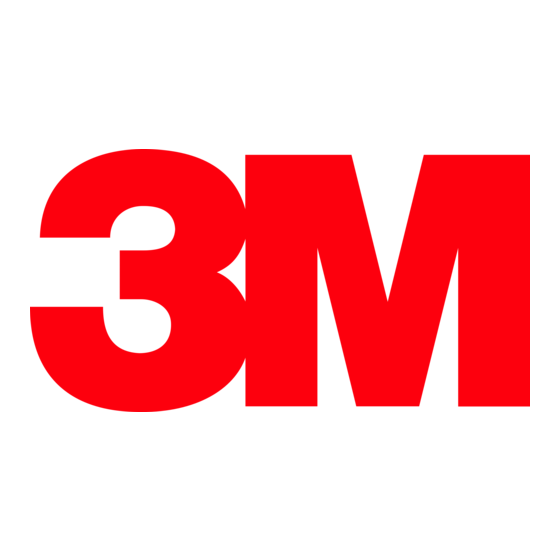3M 6100 사용자 지침 - 페이지 10
{카테고리_이름} 3M 6100에 대한 사용자 지침을 온라인으로 검색하거나 PDF를 다운로드하세요. 3M 6100 16 페이지. Half facepiece respirator
3M 6100에 대해서도 마찬가지입니다: 기술 데이터 시트 (3 페이지), 빠른 시작 매뉴얼 (2 페이지), 빠른 시작 매뉴얼 (2 페이지), 빠른 시작 매뉴얼 (2 페이지), 빠른 시작 매뉴얼 (2 페이지), 사용자 지침 (2 페이지)

2. Attach 3M SA-1600 or SA-2600 breathing tubes to facepiece per the procedures outlined previously.
The procedure is identical to the 3M SA-1500 and SA-2500 models.
3. Make a selection of cartridges and/or filters that meets your respiratory protection requirements, and
attach to outer bayonets of 3M SA-1600 or SA-2600 breathing tubes. (Fig. 10)
4. Don facepiece per procedures outlined in Fitting Instructions.
5. After being properly fit tested, perform a positive and negative pressure user seal check per procedures
outlined in User Seal Check instructions.
If you cannot achieve a proper fit, DO NOT enter contaminated area. See your supervisor.
6. Attach airline to approved air regulators per pressure schedules in dual airline operator's manual.
Using the 3M Combination Dual Airline Breathing Tubes without Cartridges or
Filters
To use the 3M SA-1600 or SA-2600 breathing tubes without cartridges or filters, attach a 3M™ 6880
Bayonet Cap to each outer bayonet mount on the breathing tube. When used as a straight, Type C,
continuous flow supplied air respirator, the Assigned Protection Factor is 50 times the PEL or TLV.
FITTING INSTRUCTIONS
Must be followed each time respirator is worn.
Note: Do not use with beards or other facial hair or other conditions that prevent a good seal between the
face and the faceseal of the respirator. To help maintain a good seal between the face and the faceseal all
hair, hoods, or other equipment must be kept out of respirator faceseal area at all times.
Donning Respirator
1. Place respirator over your mouth and nose, then pull head harness over crown of your head. (Fig. 11)
2. Take bottom straps in both hands, place them in back of your neck, and hook them together. (Fig. 12)
3. Position facepiece low on the bridge of your nose for optimal visibility and best fit.
4. Adjust top straps first, then lower neck straps by pulling on ends. (Fig. 13) DO NOT pull too tight!
(Strap tension may be decreased by pushing out on back side of buckles.) Perform a positive pressure
and/or negative pressure user seal check. The positive pressure method is recommended.
If you cannot achieve a proper fit, DO NOT enter contaminated area. See your supervisor.
User Seal Checks
Always check the seal of the respirator on your face before entering a contaminated area.
Positive Pressure Seal Check
1. Place the palm of your hand over the exhalation valve cover and exhale gently. If facepiece bulges
slightly and no air leaks are detected between your face and the facepiece, a proper fit has been obtained.
(Fig. 14)
2. If faceseal air leakage is detected, reposition respirator on your face and/or readjust tension of the elastic
straps to eliminate leakage.
3. Repeat above steps until a tight faceseal is obtained.
10
